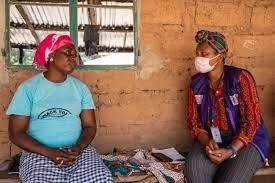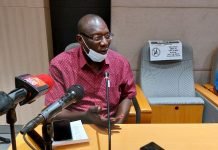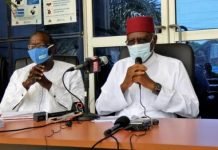By Abibatou Ceesay

Photo Credit: Daily Post Nigeria
The terms “refugee” and “internally displaced persons” are sometimes used interchangeably, but the two terms have fundamental differences.
According to the Convention on the Status of Refugees (1951), a “refugee” is a person who, “owing to well-founded fear of being persecuted for reasons of race, religion, nationality, membership of a particular social group or political opinion, is outside the country of his nationality and is unable, or owing to such fear, is unwilling to avail himself of the protection of that country; or who, not having a nationality and being outside the country of his former habitual residence as a result of such events, is unable or, owing to such fear, is unwilling to return to his habitual residence.
On the other hand, internally displaced, according to the International Organisation for Migration, is a person or group of persons who have been forced or obliged to flee or to leave their homes or places of habitual residence, in particular as a result of or in order to avoid the effects of armed conflict, situations of generalised violence, violations of human rights or natural or human-made disasters.
The major difference, therefore, between refugees and internally displaced persons is that while refugees crossed international borders, IDPs do not cross an internationally recognised state border, but within a country or state.
Unlike refugees, IDPs are on the run at home. A crucial requirement to be considered a refugee is crossing an international border.
Generally, the reasons for the movements of both refugees and IDPs may be the same, but the difference is that IDPs are still under the protection of their country’s government, even if that government is the reason for their displacement.
According to the Internal Displacement Monitoring Centre (IDMC, 2022), about 59.1 million people were internally displaced at the end of 2022. Among them were estimated to be about 9.9 million aged between five and eleven, and 7.5 million between the ages of 12 and 17.

Photo Credit: IOM
For refugees, according to official statistics, there are nearly 22.5 million of them around the world. Over half of them are under the age of 18.
In early 2022, the Senegalese military forces clashed with the Movement of Democratic Forces of Casamance (MFDC) in the Southern region of Senegal near the Senegal-Gambia border. This affected approximately 15,000 people, including Gambians and Senegalese, and resulted in an influx of internally displaced persons and refugees hosted by local communities.
In July 2022, over 5,000 people were internally displaced in The Gambia due to the heavy downpour which led to flooding across all regions of the country.
These internally displaced received relief support from The Gambia government, the National Disaster Management Agency, the Gambia Red Cross Society, World Food Programme, and IOM.















